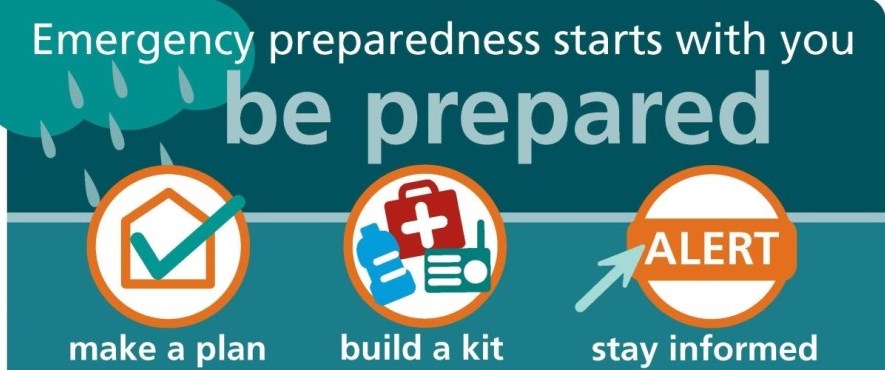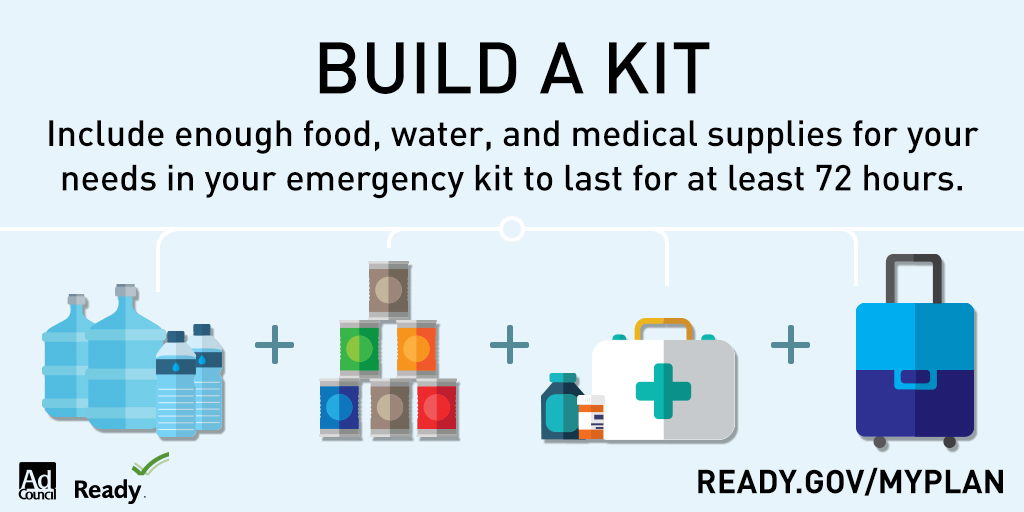Source: www.ready.gov
Disaster can strike quickly and without warning. It can force you to evacuate your neighborhood or confine you to your home. What would you do if basic services like water, gas, electricity or telephones were cut off?
Local officials and relief workers will be on the scene, but they can not reach every one right away.
Families can-and do-cope with disaster, by preparing in advance and working as a team. Knowing what to do is your best protection and your responsibility.
The likelihood that you and your family will recover from an emergency often depends on the planning and preparing done today. While each person’s abilities and needs are unique, every individual can take steps to prepare for all kinds of emergencies from fire and floods to terrorists attacks. By evaluating your own personal needs and making an emergency plan that fits those needs, you and your loved ones can be better prepared.

Emergency Supplies Kit
Some emergencies may require you to be stuck inside, without electricity, running water or access to food. Make sure your family has an emergency kit for these situations. You may also want to create a grab-and-go bag in case of emergency evacuations with some clothes, a sleeping bag or blanket, hygiene items, medicines, food and bottled water.
- Water: one gallon of water per person per day for at least three days, for drinking and sanitation
- Food: at least a three day supply of non-perishable food
- Battery powered or hand crank radio and a NOAA Weather Radio with tone alert
- Flashlight and extra batteries
- First aid kit
- Whistle: to signal for help
- Dust mask: to help filter contaminated air and plastic sheeting and duct tape to shelter-in-place
- Moist towelettes, garbage bags and plastic ties for personal sanitation
- Emergency wrench and pliers to turn off utilities
- Manual can opener for food
- Local maps: don’t rely on cell phones as there may not be service or wifi
- Cell phone: with chargers, inverter or solar charger
For a complete guide to building an emergency kit and for more information about planning for emergencies, visit FEMA’s website at www.ready.gov.

Click on the link above to learn about the CodeRED program and sign up to receive notifications to your cell phone.

